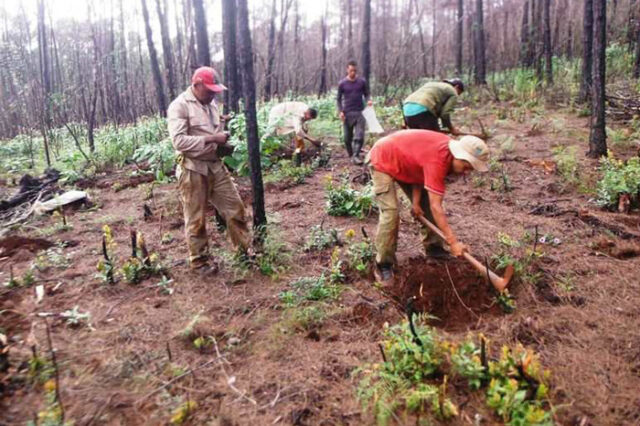 The Provincial Center for Environmental and Technological Services (CESAT) implemented during 2023 an effective adaptive hydrographic method to boost forest fire control and extinction actions in the Alejandro de Humboldt National Park (PNAH), a natural site declared World Heritage by UNESCO in 2001.
The Provincial Center for Environmental and Technological Services (CESAT) implemented during 2023 an effective adaptive hydrographic method to boost forest fire control and extinction actions in the Alejandro de Humboldt National Park (PNAH), a natural site declared World Heritage by UNESCO in 2001.
The PhD. Yamilka Joubert Martínez, director of CESAT, reported that the procedure contributed to evaluating the role of various species of fire-spreading plants, defining lessons to strengthen defense against accidents in areas prone to ignitions and establishing three kilometers of secondary river systems in the extensive network of rivers, streams and permanent tributaries in the PNAH.
It involves first identifying the torrents and then clearing the riverbed of vegetation and combustible material, two meters on both sides, from below and up, explained Gerardo Begué Quiala, scientific director of CESAT.
The novel procedure, based on nature, does not require great technological efforts and seeks to isolate the fire by taking advantage of soil moisture, which allows marking points where it would be possible to use motor pumps to extinguish the fire more easily and efficiently.
Techniques to assist re-sprouting are also applied to broad-leaved trees, with greater resilience and functionality from an ecological point of view, and damaged parts are removed, cleaned and grow stronger, the Master of Science Ecological, added.
Its advantages include the reduction of time to extinguish the fire, the humanization of work, reduction of topographical limitations and the creation of humidity traps on the flanks to spread water on the vegetation.
In the Ojito de Agua area, the largest forest fire in the history of the PNAH was recorded between April 17 and May 11, 2021, the main nucleus of the protected area of the Cuchillas del Toa Biosphere Reserve, where 1,896 hectares of forests were affected by actions related to illegal poaching mining in the Yarey River.
CESAT and the Cuban Forest Ranger Corps indicated that illegal mining in the most important protected area in Cuba damaged the soils and river networks of the Holguín’s towns Calentura and Farallones de Moa, and those of Vázquez-Yarey in 2023, and Palma del Tiro, in the municipality Yateras, in Guantanamo Province.
Translated by Liubis Balart Martínez